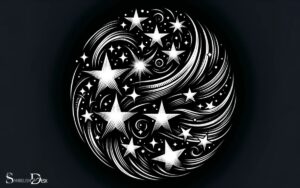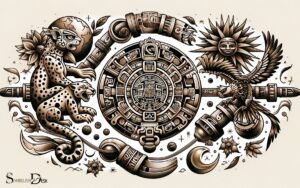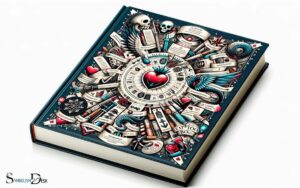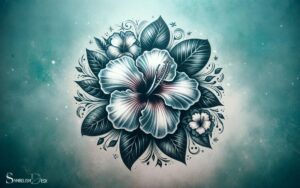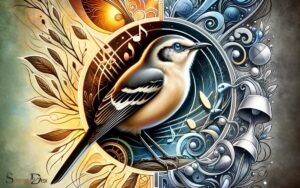Ancient Symbols and Meanings for Tattoos? Explain!
Exploring ancient symbols for tattoos reveals a tapestry of cultural heritage and profound meanings.
These symbols, ranging from Celtic knots to the enigmatic Egyptian eye of Horus, not only offer aesthetic value but also represent historical beliefs and stories.
By choosing such symbols, individuals connect with the ancient wisdom and traditions of various civilizations. Ancient symbols used in tattoos serve as a bridge to the past, each with its unique narrative.
Here are some examples:
- Celtic Knots: Representing eternity and interconnectedness.
- Norse Runes: Each rune has a specific meaning, often invoking strength, wisdom, or protection.
- Egyptian Hieroglyphics: Symbols like the ankh signify life and eternal existence.
- Chinese Characters: These can encapsulate concepts like love, peace, or strength.
Incorporating these symbols into tattoos allows individuals to express personal values or connect with their heritage.
Inked with history, ancient symbols in tattoos are more than mere designs—they are emblems of our shared human journey. These markings transcend time, carrying stories of culture, identity, and personal milestones across generations. From sacred patterns etched to honor spiritual beliefs to tribal designs signifying rites of passage, each tells a unique tale. In many ways, they serve as tattoo symbols for eternity, preserving the essence of who we are while connecting us to those who came before.
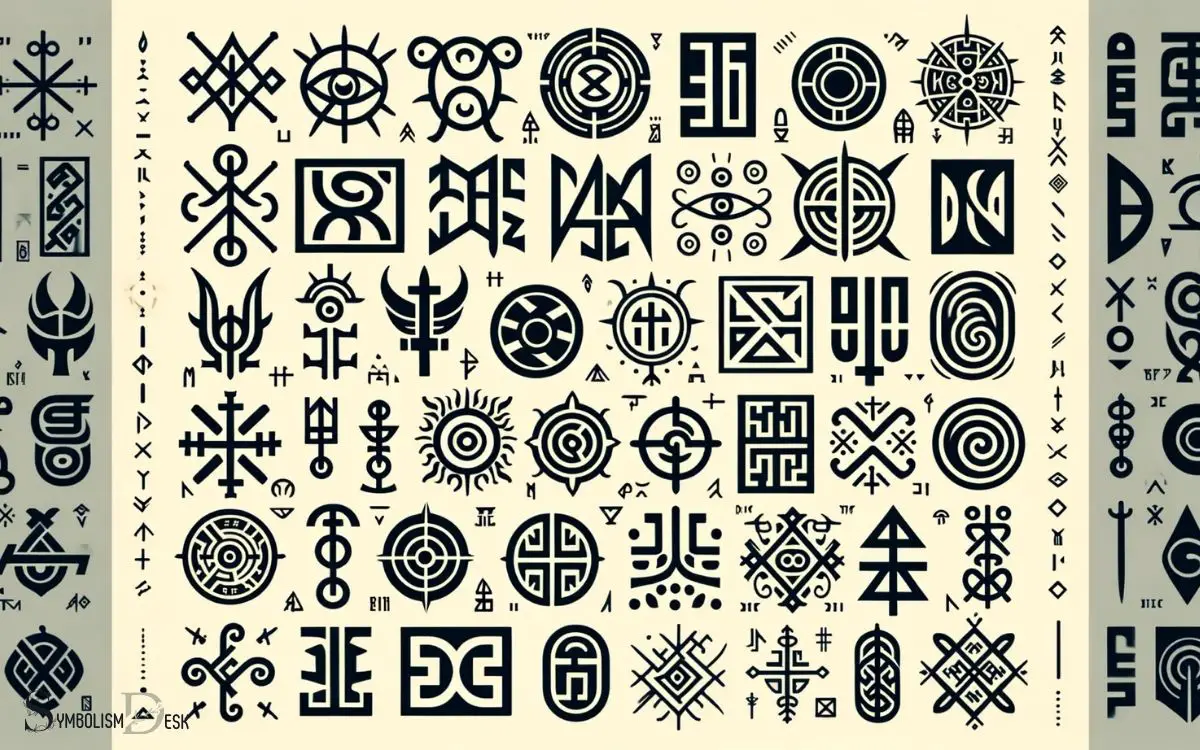
Key Takeaway
Celtic Symbols and Meanings
Celtic symbols hold significance in both ancient and modern contexts, representing various aspects of Celtic culture and mythology.
The Celtic cross, for example, combines a cross with a circle, symbolizing the meeting place of divine, or the eternal spiritual life joining the physical life.
The triskele, with its three spirals, signifies the three realms
- Land, sea, and sky
- Or the stages of life
- Death, life, and rebirth.
The triquetra, a three-cornered knot, embodies the concept of triplicity in unity, such as the three domains of earth, sea, and sky interwoven as one.
These symbols aren’t only visually intriguing but also carry deep cultural and spiritual meanings, making them popular choices for tattoos and other forms of artistic expression.
Norse Symbols and Their Significance
Norse symbols hold deep cultural and mythological significance in the history of the Scandinavian people. From the runic alphabet to the intricate mythological symbolisms, Norse symbols are rich in meaning and tradition.
Understanding the interpretations of these symbols can provide insight into the ancient Norse worldview and belief systems.
Norse Rune Interpretations
The ancient Norse symbols, known as runes, hold deep significance and are commonly used in tattoo designs to symbolize various aspects of life and spirituality.
- Elder Futhark: The oldest runic alphabet, used for magical and divinatory purposes.
- Algiz: Represents protection and is often used for guidance and defense.
- Vegvisir: A Viking compass symbol, believed to provide guidance and protection during travels.
- Yggdrasil: The world tree in Norse mythology, symbolizing the interconnectedness of all things.
Norse runes carry profound meanings and are deeply rooted in Norse culture and spirituality. Each symbol embodies a unique significance, making them popular choices for individuals seeking tattoos that reflect their connection to ancient Norse traditions and beliefs.
Mythological Norse Symbolisms
Mythological Norse symbols embody rich meanings and hold significant importance in both historical and modern contexts.
These symbols are deeply rooted in Norse mythology and have been embraced in various forms of art and culture.
Here is a table highlighting some prominent Norse symbols and their significance:
| Symbol | Significance |
|---|---|
| Valknut | Associated with the god Odin and the afterlife |
| Mjolnir | Represents strength, protection, and blessings |
| Yggdrasil | Symbolizes the interconnectedness of all things |
| Vegvisir | A compass for guidance and safe travels |
| Helm of Awe | A symbol of protection and might |
Norse symbols continue to captivate people’s imagination and are often chosen as tattoo designs to honor the rich heritage and beliefs of the Norse culture. The next section will delve into the timeless allure of Egyptian hieroglyphics in tattoo art.
Egyptian Hieroglyphics in Tattoo Art
Egyptian hieroglyphics are frequently incorporated into tattoo art as a way to symbolize ancient Egyptian culture and beliefs.
This ancient form of writing offers a rich tapestry of meanings and symbolism that can add depth and significance to tattoo designs.
Here are some reasons why Egyptian hieroglyphics are popular in tattoo art:
- Mystical and spiritual significance
- Connection to ancient wisdom and knowledge
- Aesthetically pleasing and visually striking
- Personalized meanings and messages
Chinese Symbolism in Tattoo Designs
Chinese symbolism in tattoo designs encompasses profound cultural significance and enduring wisdom.
From the majestic dragon to the delicate cherry blossom, each symbol holds deep meaning rooted in Chinese culture.
The dragon, a symbol of power, strength, and good luck, is a popular choice for those seeking to embody these qualities.
The koi fish represents perseverance and determination, while the lotus flower symbolizes purity and enlightenment.
The use of Chinese characters in tattoos is also common, with each character carrying its own unique meaning and history.
It’s important to understand the cultural context and significance of these symbols before incorporating them into tattoo designs, as they hold great importance in Chinese tradition.
Transitioning into the subsequent section about ‘native American symbols and their interpretations’, it’s intriguing to explore the diverse meanings behind these ancient symbols.
Native American Symbols and Their Interpretations
Native American symbols hold deep cultural significance and are often used in tattoo designs to represent tribal heritage and spiritual beliefs.
Understanding the meanings behind these symbols is essential for those seeking to incorporate Native American imagery into their tattoos respectfully.
Tribal Symbol Significance
Tribal symbols hold significant cultural and spiritual meanings for many Native American communities, often representing ancestral wisdom, connections to nature, and personal identity.
These symbols convey deep-rooted beliefs and cultural heritage, offering insights into the rich tapestry of Native American traditions.
Understanding the significance of these tribal symbols can provide valuable insights into the beliefs and values of indigenous communities.
Some key aspects to consider include:
- Spiritual Connections: Tribal symbols often depict the interconnectedness between humans, nature, and the spiritual realm.
- Ancestral Wisdom: These symbols encapsulate the wisdom passed down through generations, preserving the knowledge of indigenous peoples.
- Cultural Identity: They serve as a visual representation of a tribe’s unique cultural identity and history.
- Harmony with Nature: Many symbols reflect the reverence for nature and the balance between humankind and the natural world.
Cultural Representation in Tattoos
Many individuals incorporate Native American symbols into their tattoos to honor the cultural heritage and spiritual significance associated with these ancient icons.
Native American symbols hold deep cultural meanings and are often chosen to represent concepts such as protection, strength, and connection to nature.
For example, the bear symbolizes strength and courage, while the wolf represents loyalty and family.
Feathers are often used to symbolize freedom, and the dreamcatcher is believed to protect against negative energy.
It’s important to note that these symbols hold profound cultural significance for Native American communities, and it’s essential for those considering these tattoos to understand and respect their meanings.
When incorporating Native American symbols into tattoos, it’s crucial to approach the designs with reverence and a deep appreciation for the cultural traditions they represent.
Greek and Roman Mythology in Tattoos
Greek and Roman mythology inspires many tattoo designs, reflecting the enduring cultural influence of these ancient civilizations.
The rich tapestry of stories and characters from Greek and Roman mythology provides a wealth of symbolism for those seeking meaningful tattoo designs.
Some popular mythological figures and symbols include:
- Medusa: Representing protection or warding off evil.
- Zeus’s thunderbolt: Symbolizing power and strength.
- Phoenix: Signifying rebirth and renewal.
- Minotaur: Reflecting inner struggles and overcoming obstacles.
These mythological symbols are often chosen for their deep cultural significance and personal resonance.
Greek and Roman mythology continues to captivate people with its timeless themes, making it a compelling choice for tattoo art.
This fascination with ancient myths speaks to the enduring legacy of these civilizations in contemporary culture.
Transitioning into the subsequent section about ‘symbolism of Indian and Buddhist iconography’, the influence of myth and legend on tattoo art remains a powerful and evocative force.
Symbolism of Indian and Buddhist Iconography
Drawing from the enduring cultural influence of ancient civilizations, the symbolism of Indian and Buddhist iconography offers a rich tapestry of meanings for those seeking meaningful tattoo designs.
In Indian and Buddhist traditions, symbols are deeply rooted in spiritual and philosophical significance, making them popular choices for tattoos that carry profound meanings.
The lotus flower, for instance, symbolizes purity, enlightenment, and rebirth in both Indian and Buddhist cultures.
Another widely recognized symbol is the Om, representing the essence of the universe and the ultimate reality.
The endless knot, a symbol of interconnectedness and eternity, is also prominent in Buddhist iconography. Additionally, the wheel of Dharma, denoting spiritual teachings and the path to enlightenment, holds significant symbolism.
| Symbol | Meaning |
|---|---|
| Lotus Flower | Purity, Enlightenment, Rebirth |
| Om | Essence of the Universe, Ultimate Reality |
| Endless Knot | Interconnectedness, Eternity |
| Wheel of Dharma | Spiritual Teachings, Path to Enlightenment |
Conclusion
The ancient symbols and meanings for tattoos provide a fascinating glimpse into the rich cultural heritage of various civilizations.
From Celtic and Norse symbols to Egyptian hieroglyphics and Chinese symbolism, the depth and diversity of these ancient iconographies offer a treasure trove of inspiration for tattoo art.
Exploring the Greek and Roman mythology, Native American symbols, and Indian and Buddhist iconography adds an alluring allure to the world of tattoo designs.

